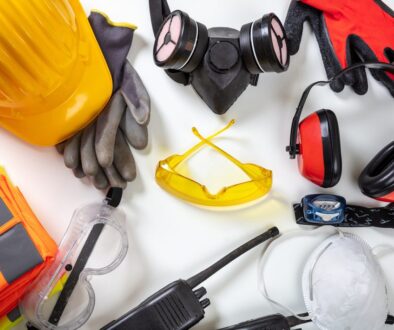What Happens When Extreme Heat Collides with a Pandemic?
The recent extreme heat warnings across the south and south-west of the country brought back memories of last summer when triple-digit temperatures in many locations put increased stress on public health agencies and healthcare systems already under immense pressure from the COVID-19 pandemic. Alarmingly, this year the situation could get worse.
The impact of extreme heat on the health of U.S. citizens is a disputed topic. While CDC estimates suggest there are around seven hundred heat-related deaths each year, researchers claim many thousands die due to conditions exacerbated by extreme temperatures such as cardiovascular disease, renal disease, and asthma.
In addition to the number of premature deaths attributable to extreme heat, many thousands of individuals seek hospital treatment for heat exhaustion, heatstroke, alcohol poisoning, and accidental drug overdoses. In “regular” years, the demands on public health agencies and healthcare systems are usually manageable. During a pandemic, that’s not the case.
The Impact of Extreme Heat on the COVID Response
Extreme heat tends to impact those most vulnerable to COVID-19 – older citizens, people with underlying health conditions, low-income families, and Black, Latino, and Indigenous communities. Exposure to heat has also been tied to poorer mental health outcomes, including an increased rate of suicide, which mirrors the impact of the COVID-19 pandemic on mental health.
It is also the case many coping strategies usually available to vulnerable populations during extreme heat conditions were inaccessible last summer. Air-conditioned malls and public buildings were shut due to stay-at-home orders; cooling centers were closed due to the risk of the virus being spread in enclosed environments; and water parks remained waterless to prevent large groups from gathering.
Those working to help protect vulnerable and disadvantage communities from the extreme heat were hampered by staff shortages, office closures, and the non-availability of crucial resources – notwithstanding they also had to wear PPE while performing their roles and maintain social distancing. It made life very difficult for those trying to respond to community needs.
Why This Year Could be Worse than 2020
In theory, responding to extreme weather events should be less complicated this year than in 2020. Infection rates are lower, a significant proportion of the population has been vaccinated against COVID-19, and air-conditioned malls, public buildings, cooling centers, and spray parks have re-opened. However, there is reason to fear the situation could get worse.
One of the consequences of the pandemic is a supply shortage of parts for air conditioning units. This not only means the units themselves are in short supply, but also the parts needed to repair units when they break down and the MERV-13 filters required for HVAC systems in large indoor spaces to prevent the spread of COVID-19 in enclosed environments.
This potentially means individuals with air-conditioning units will not be able to cool private residences if their units break down; and, if malls, public buildings, and cooling centers are forced to close due to broken units or the filter shortage, there will be nowhere for people to go to escape the extreme heat. Shops, offices, and schools could also be impacted by the filter shortage.
How Public Agencies Can Prepare Communities for Extreme Heat
According to experts in the HVAC industry, healthcare facilities that have existing supplier relationships with vendors of MERV-13 filters are unlikely to experience supply shortages. Nonetheless, some public agencies are preparing for extreme heat during a pandemic by following the advice issued by the Red Cross and Red Crescent National Societies.
The advice – published in “Extreme Heat during the COVID-19 Pandemic” – suggests communication strategies for reaching out to communities in order to raise awareness of heightened vulnerabilities to hot weather due to the COVID-19 pandemic. Among the recommendations suggested for scaling up public messaging, the publication recommends:
- Use a range of communication channels to maximize messaging reach
- Keep messaging clear and short, use plain language and avoid unnecessary jargon.
- Appropriate language versions may be necessary to reach high-risk communities.
- Coordinate messaging across levels of government to minimize the risk of heatwave messaging contradicting COVID-19 messaging.
- Mention that COVID-19 transmission does not decrease during hot weather. Exposure to sun and hot temperatures will increase heat stress and does not prevent or cure COVID-19.
- Consider the ways in which heatwave messaging may be received or acted upon differently due to the ongoing COVID-19 pandemic.
- Proactively address myths, risk perceptions, and concerns in public messaging. Provide clarity on the mitigating measures that are in place where relevant.
Among other valuable information, the publication also includes advice about how public agencies can educate residents on low-cost strategies they can use to cool their homes without air conditioning, which partners are important when responding to heat-related emergencies, and how agencies can protect staff and volunteers from heat-related illnesses during COVID-19.
Prioritizing Vulnerable Citizens – How Miami-Dade County is Doing It
At the end of April, Miami-Dade County Mayor Daniella Levine Cava appointed Jane Gilbert to the unique and brand-new position of Interim Chief Heat Officer. In her first-of-a-kind role, Gilbert will determine who in the county is most vulnerable to extreme heat and create innovative ways for those residents to stay cool as the mercury rises.
Speaking with Accuweather.com, Gilbert said one of her first priorities was to train volunteers to check on vulnerable communities in the event of a power outage caused by extreme heat. As Miami-Dade County already has an Emergency & Evacuation Assistance Program, the process of identifying vulnerable communities is already done – enabling Gilbert to devise further initiatives.
While other public agencies might find it harder to be so proactive without an existing access and functional needs registry, the opportunity exists to take advantage of the Smart911 platform to identify vulnerable individuals through crowd-sourced data. The platform also enables public agencies to scale up public messaging, track requests for assistance, and automate team coordination to ensure an effective response when extreme heat collides with a pandemic.





